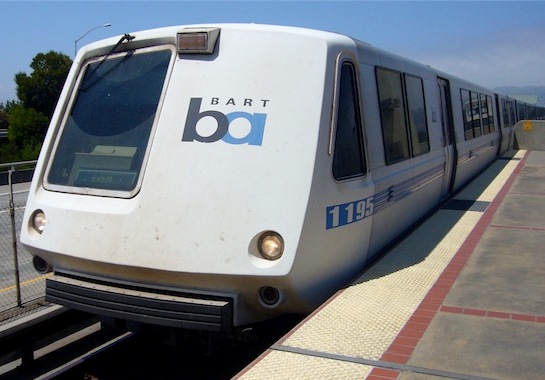Modern
train control systems
provide speed commands from the wayside to the lead
vehicle by digital
codes electronically delivered via the running
rails. "Cab signaling,"
it's called.

The track is divided into blocks. As the train travels along each block, it receives its speed command for that block as a repeating bit pattern. Various factors determine the speed limit that must be enforced on the train when it enters any given block, including curves in the track and switch settings, station-stops and the presence of traffic ahead. Cab signaling must address several technical challenges...
Suppose that the following messages are to be communicated to the train:
|
